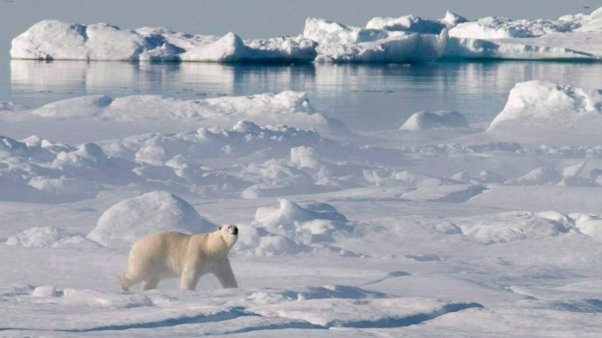
The polar bear’s role is interwoven with the balance of life in the Arctic. It’s not just about survival; it’s about how each part of the ecosystem interacts with one another. Imagine a giant tapestry where each thread contributes to the overall picture. Remove one thread, and the entire image can change dramatically. Let’s dive into how polar bears impact their surroundings, from the ice they roam to the other animals they connect with.
Understanding the Polar Bear’s Habitat
Polar bears thrive in the icy realms of the Arctic. Their habitat is primarily the sea ice, which forms on the ocean’s surface and serves as a platform for hunting seals. These bears are perfectly adapted to this frigid environment with their thick fur and a layer of fat that keeps them warm. But here’s where it gets interesting: the melting sea ice due to climate change is challenging their existence, affecting not only the bears but the entire Arctic ecosystem.
The sea ice serves as a vital hunting ground for polar bears. They spend hours waiting by breathing holes, ready to pounce on unsuspecting seals. This relationship between the bears and seals is an essential part of the food web. If the bears struggle to find seals because the ice is melting, it can lead to a significant drop in their population. And when the polar bear population declines, it doesn’t just affect them; it sends ripples through the whole ecosystem.
The Role of Polar Bears as Top Predators
Polar bears are often referred to as apex predators, meaning they sit at the top of the food chain in their environment. This title isn’t just a label; it carries serious weight. As top predators, they help keep the populations of their prey, mainly seals, in check. Without this natural balance, seal populations could explode, leading to overgrazing of their food sources, such as fish and other marine life.
Here’s the thing: when the seals thrive unchecked, they can deplete fish populations, which many other Arctic animals depend on for survival. By hunting seals, polar bears indirectly support a balanced ecosystem. It’s like how a healthy predator-prey relationship in a forest helps maintain plant diversity. If one element goes off-kilter, the entire system can falter.
The Impact of Polar Bears on Marine Life
Polar bears don’t just impact their immediate prey; they also influence the broader marine ecosystem. Seals, the primary food source for polar bears, play a critical role in the health of the marine environment. They feed on fish and invertebrates, helping keep these populations stable. So, when polar bears hunt, they’re not merely satisfying their hunger; they’re facilitating a natural balance.
Moreover, polar bears contribute to nutrient cycling in their habitat. When they consume seals, they leave behind remnants that decompose, enriching the surrounding waters with nutrients. This process supports various marine organisms, including fish and algae. Think of it as nature’s natural fertilizer, promoting biodiversity in the Arctic waters.
Influence on Other Arctic Animals
Polar bears also affect other Arctic wildlife. Their presence can dictate the behavior of various species. For example, smaller predators, like arctic foxes, often scavenge leftover seal remains from polar bear kills. This scavenging is crucial for their survival, especially in harsh winters when food is scarce.
Additionally, the bears’ hunting patterns can influence the movements of other animals within the ecosystem. For instance, the migration patterns of certain birds and marine mammals may be altered based on polar bear activity. It’s a fascinating domino effect where one species impacts many others—each playing its part in the intricate web of Arctic life.
The Effects of Climate Change on the Polar Bear Ecosystem
Climate change is one of the biggest threats facing polar bears and their ecosystem. The warming planet is causing sea ice to melt at an alarming rate, which directly impacts the bears’ ability to hunt. As ice diminishes, polar bears are forced to travel farther distances, which can lead to increased competition for food among bears and a higher mortality rate among young cubs.
This isn’t just a polar bear issue; it’s a global one. The melting ice contributes to rising sea levels, affecting coastal habitats all over the world. So, when we talk about the polar bear’s role in its ecosystem, we must also consider the larger environmental changes in play. Saving polar bears means protecting the delicate balance of their entire Arctic world.
Conservation Efforts for Polar Bears
Various organizations are dedicated to protecting polar bears and their habitat. Efforts include reducing greenhouse gas emissions, preserving their hunting grounds, and raising awareness about climate change. The idea is not just to save polar bears but to ensure future generations can witness these magnificent animals in their natural habitat.
Conservation strategies often involve local communities as well. By working together, we can create sustainable practices that support both the bears and the people living in the Arctic regions. It’s a win-win situation. The more we understand the polar bear’s role in its ecosystem, the more motivated we are to take action for their future.
Polar bears are more than just a symbol of the Arctic; they are a linchpin in a complex web of life. Their hunting habits influence seal populations, which in turn affect the entire marine ecosystem. By understanding their role, we can see how interconnected life really is in the Arctic.
As we face the realities of climate change and its devastating effects, protecting polar bears has become a pressing issue. They remind us that every creature, no matter how big or small, plays a vital role in maintaining the balance of nature. By conserving polar bears, we protect the intricate tapestry of life in the Arctic, ensuring that it remains vibrant for generations to come.
